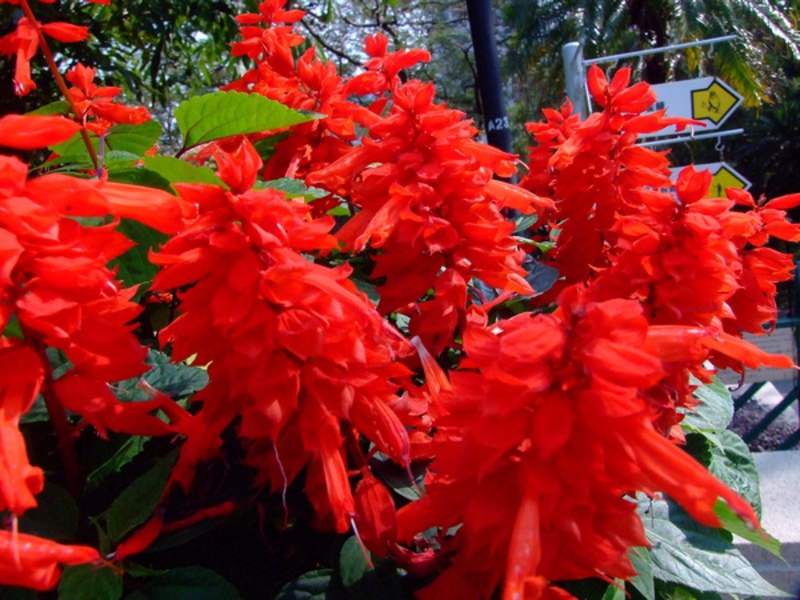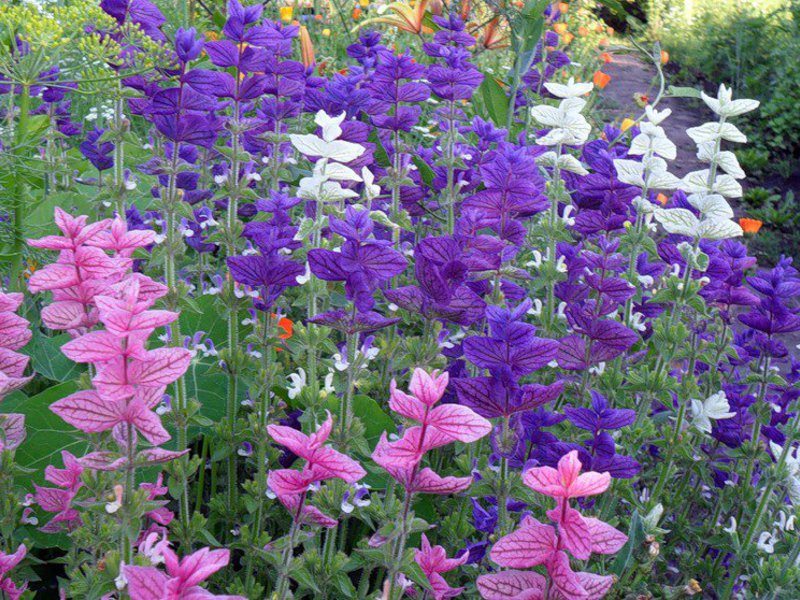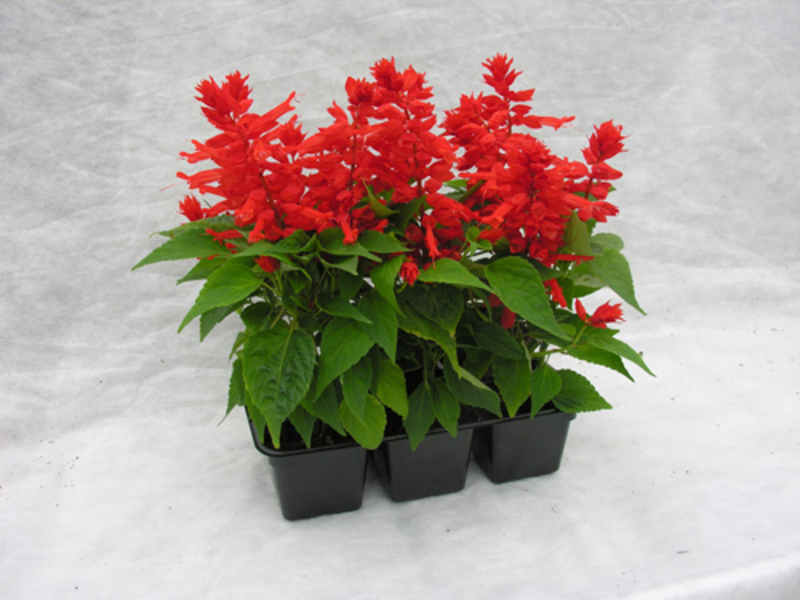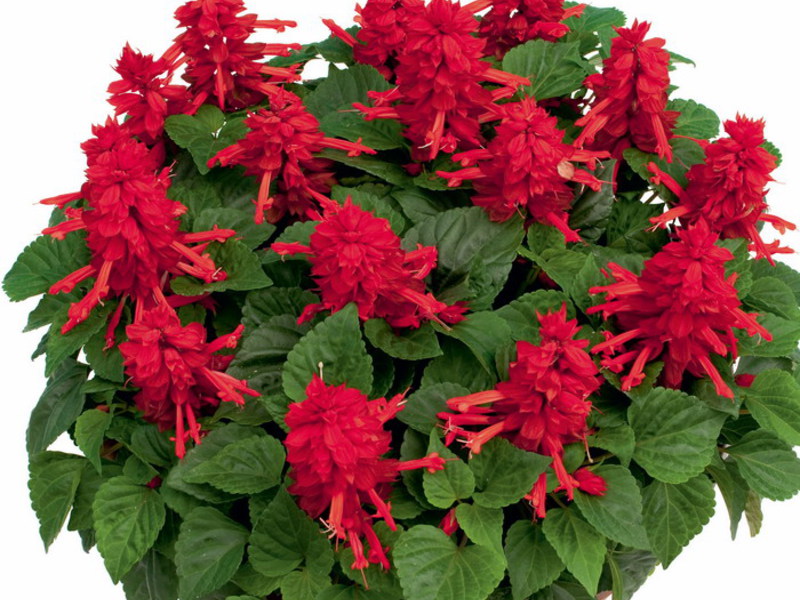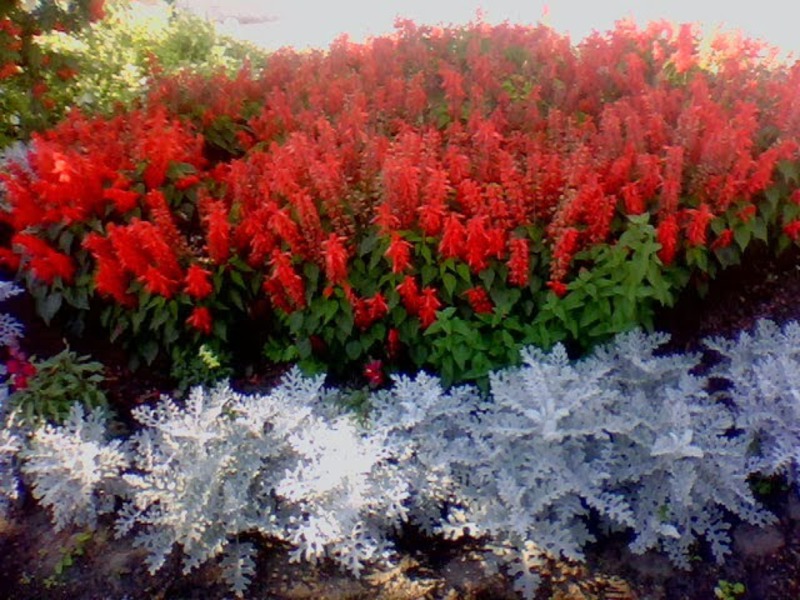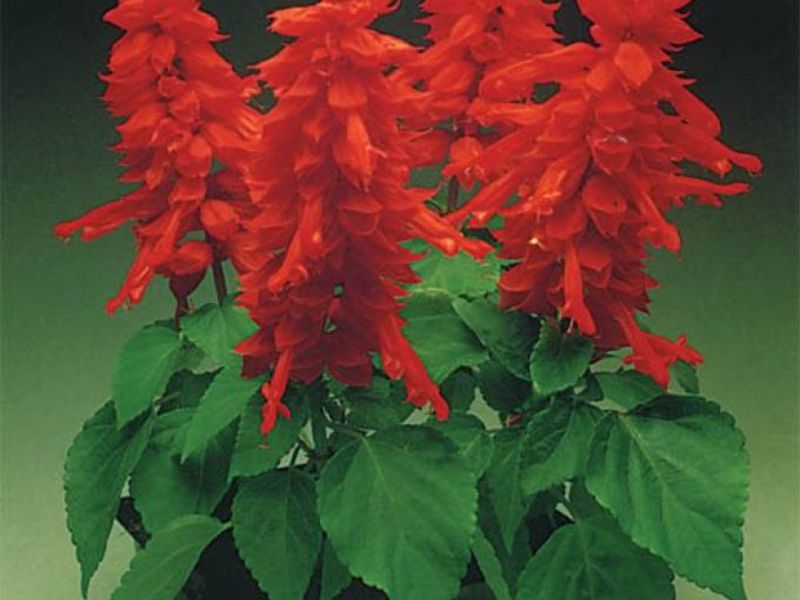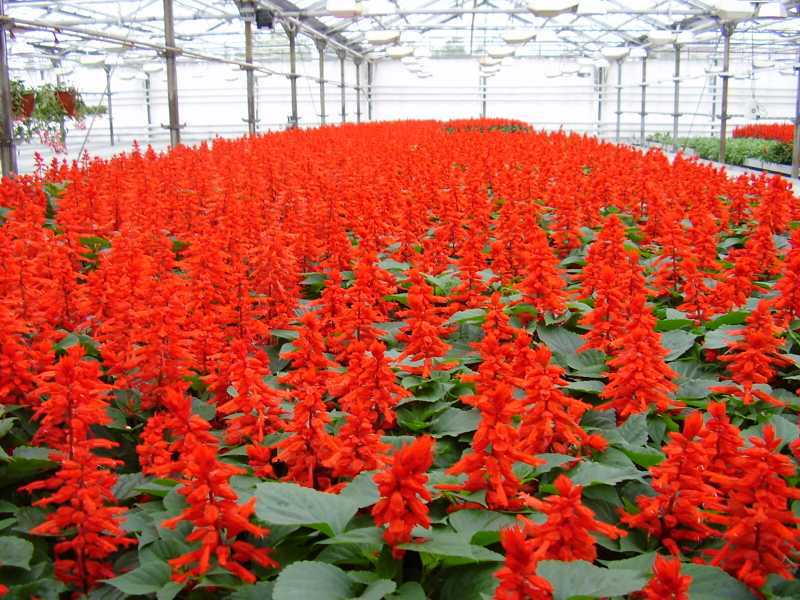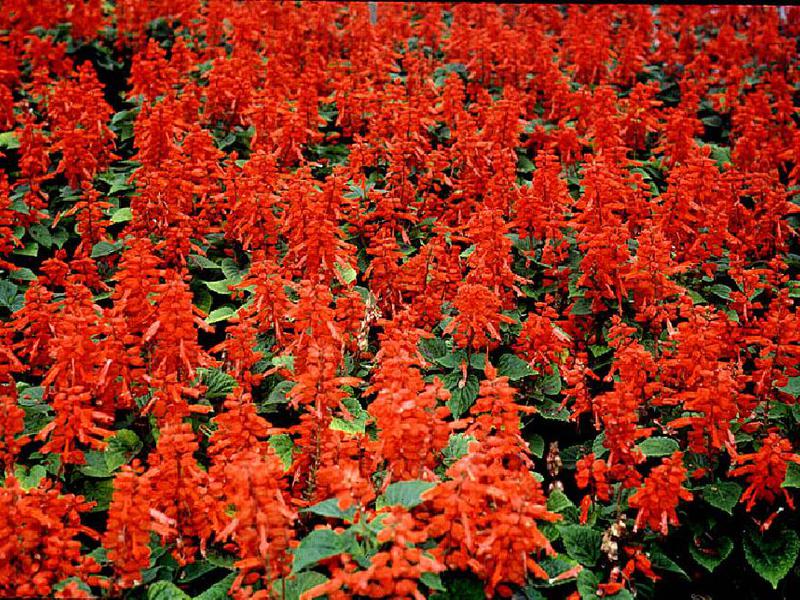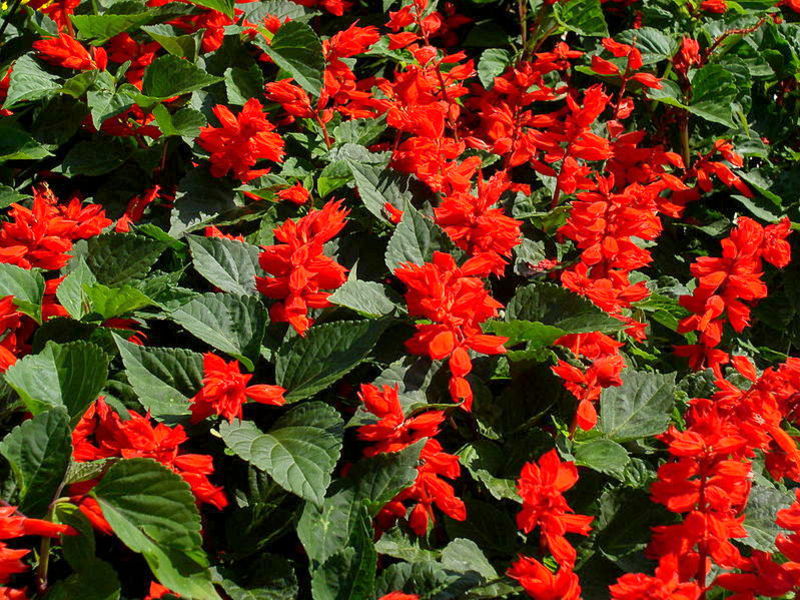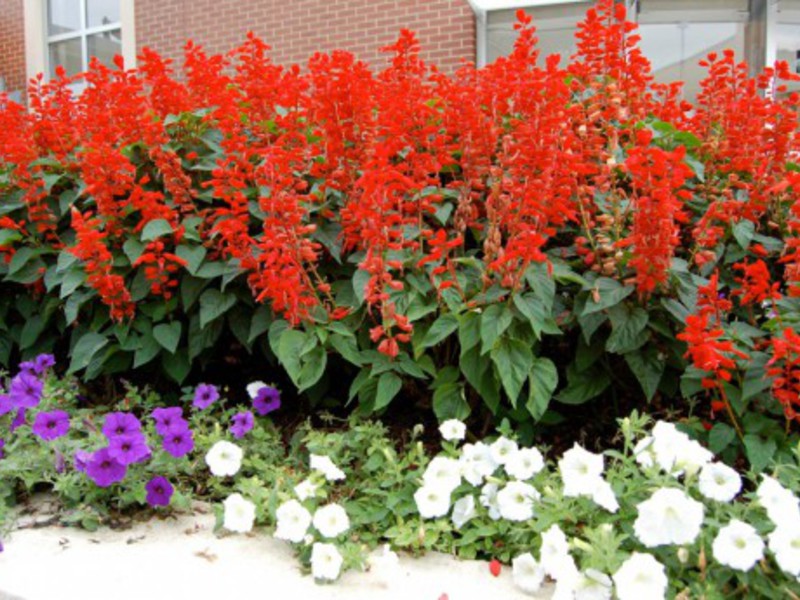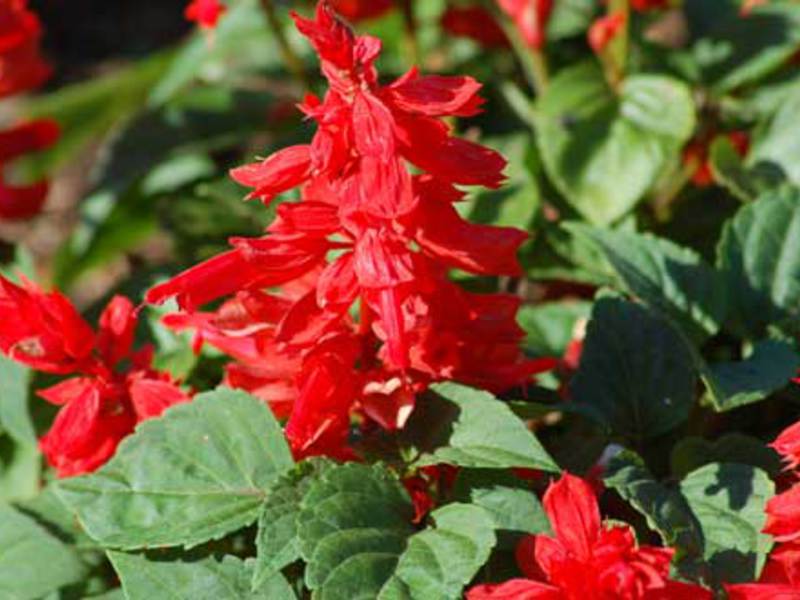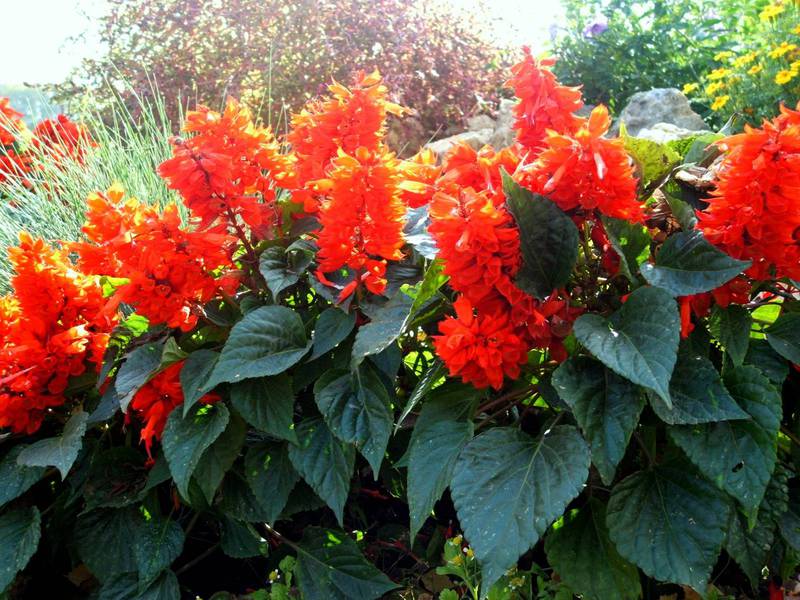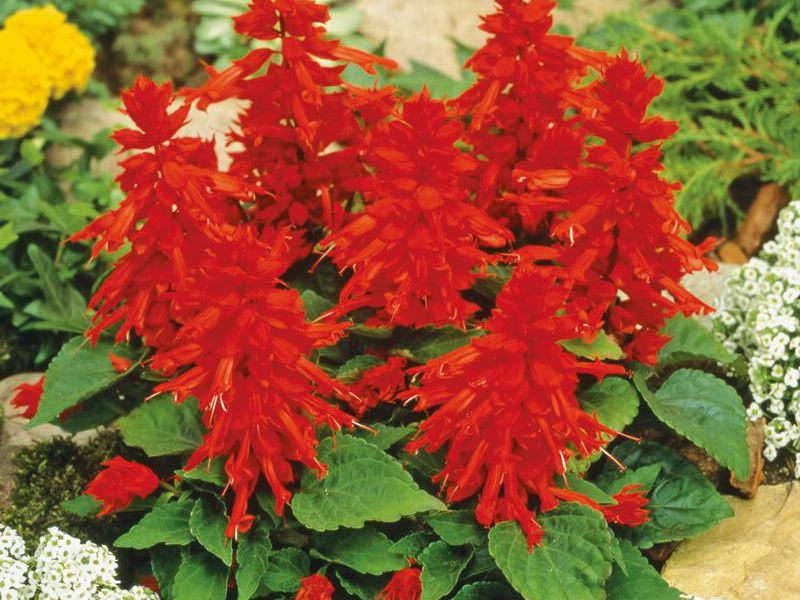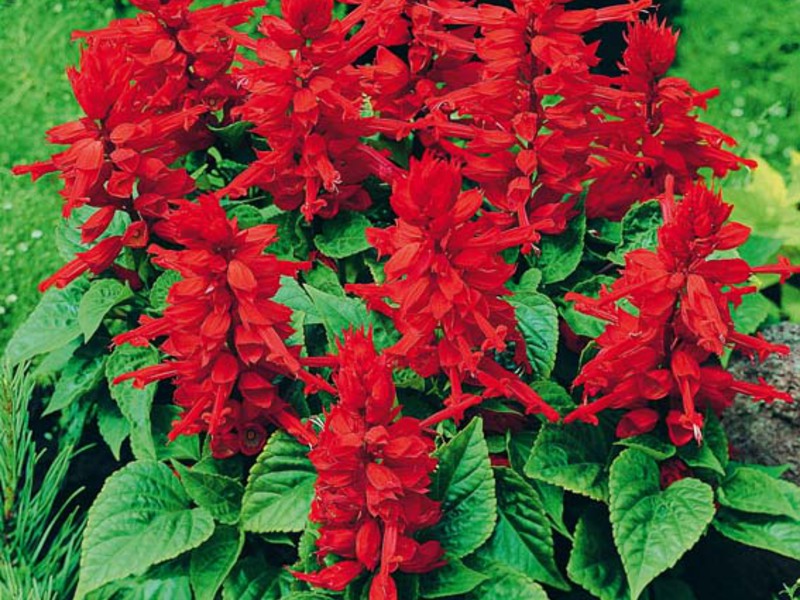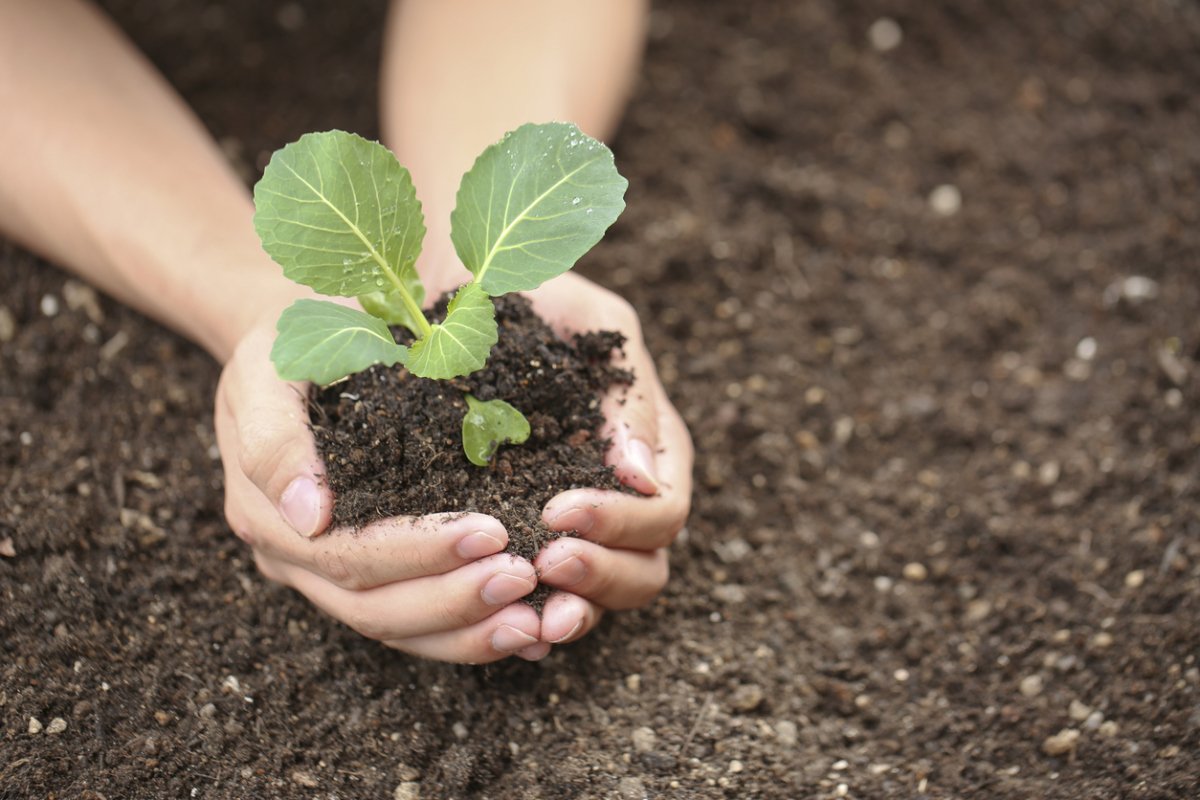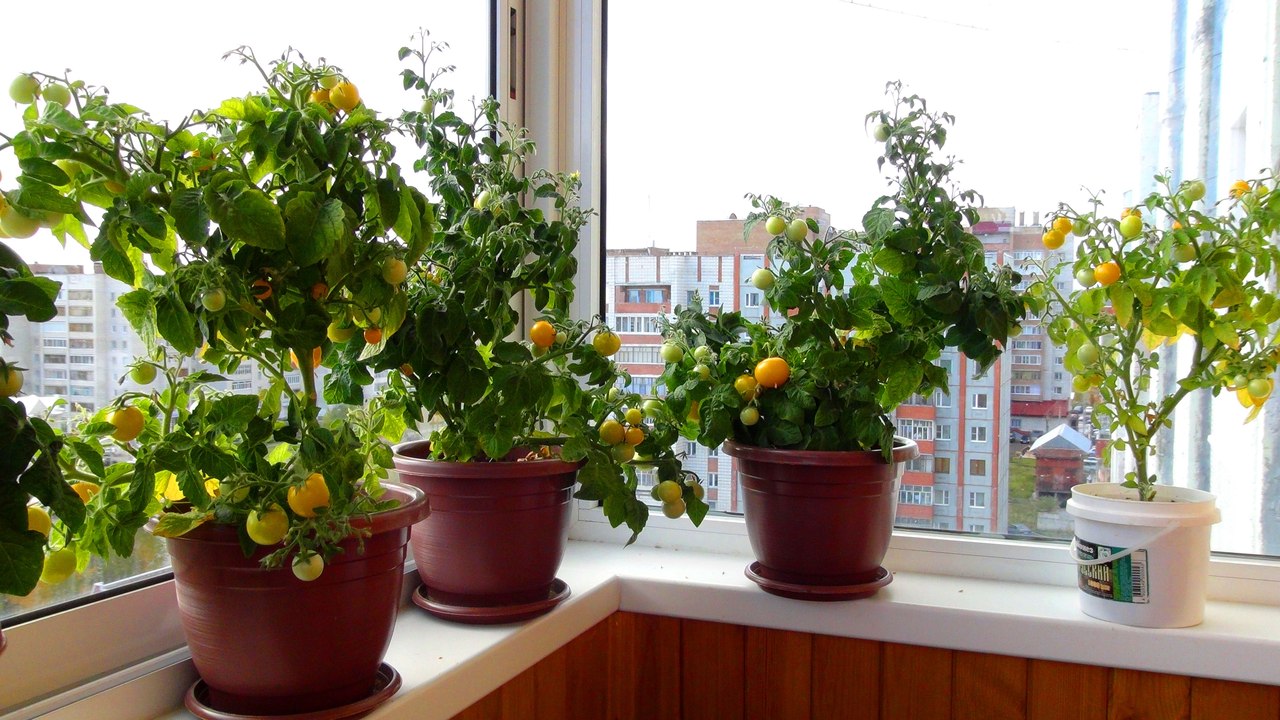Every year summer brings a lot of warmth to the earth, which all plants, without exception, need so much. It is necessary for the flowering and ripening of seeds, which are destined to replace the past generation. Salvia at this stage of development is presented in the form of a panicle of tubular flowers, which, at the very height of summer, begin to pollinate the well-known insects with long proboscis. These flowers cannot but delight the gardener, who decided to plant them on the site. However, this business is quite complicated and not known to everyone, therefore, many often make mistakes.
Content
The origin and cultivation of salvia
A photo of a plant may surprise you, because it is unfamiliar to ordinary summer residents. However, experts are well aware of its features.
Salvia is a close relative of sage, which represent the family of luciferous. If you try to translate the name of the plant, it will be clear about its purpose - to be healthy. Sage belongs to a group of traditional plants, about the beneficial properties of which people learned many centuries ago. Even in the days of Ancient Egypt, it was used to combat various ailments. Salvia is one of the decorative forms that originated, like sage, from common ancestors. However, in European countries it has long been customary to equate salvia and sage.
Starting from the moment when a person first learned about the existence of a plant, they began to actively cultivate it in a variety of species. The largest representation of wild salvia is in America and Europe. The genus Salvia is quite numerous and includes more than 900 different varieties... There are some pretty interesting species on this list, such as the hallucinogenic variety. It is a very light-loving plant that grows best on light soils.
Planting and caring for salvia
In recent years in cities Salvia is often used for street decoration, which can be explained by several reasons:
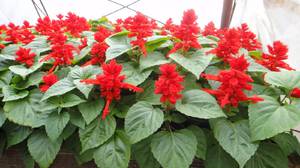 salvia is one of those rare plants that are distinguished by continuous flowering, decorating the earth until the first frost;
salvia is one of those rare plants that are distinguished by continuous flowering, decorating the earth until the first frost;- this attractive plant has a tendency to grow, so the composition created on its basis will not lose its original form;
- Salvia feels good even in conditions of air pollution, which does not prevent it from maintaining its decorative appeal;
- compositions based on salvia look especially impressive if varieties of different shades are used.
For a long time around the world, gardeners have been practicing the cultivation of salvia at home. In this perennial plant, they are attracted not only by the bright scarlet color of the panicles, but also by the rich color palette. If you wish, you can arrange a tiered landingif you use salvia species of a certain height. However, in order for this plant to retain its beautiful flowers as long as possible, it is necessary to correctly approach the process of growing seedlings.
Salvia: photo of flowers, seedlings when to plant?
Considering that at least 4 months must pass from the moment of emergence of seedlings before the salvia begins to bloom, it is necessary to sow seeds for seedlings of this annual plant in February or early March. For the purchase of seeds of this ornamental plant, you can contact a specialized store or collect them yourself. This requires wait for the flowers to wither and falland after 50 days the fully ripe seeds can be harvested. This planting material is suitable for sowing over the next five years.
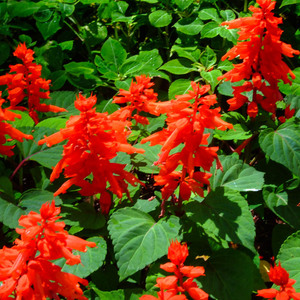 before proceeding with sowing, it is necessary to resolve the issue of planting soil. To grow seedlings, you must use a soil mixture that has a light and nutritious structure. When two weeks remain until the day of sowing, the soil is treated using a composition that increases biological processes in the sleeping earth. The land ready for use must be fertilized and watered. For this, the first feeding is being prepared: 1 teaspoon of EM-1 Baikal is added to a bucket of earth. Two weeks will be enough to increase the fertility of the soil, as well as give the opportunity to germinate threadlike shoots of weeds, which will surely come to the surface in favorable conditions;
before proceeding with sowing, it is necessary to resolve the issue of planting soil. To grow seedlings, you must use a soil mixture that has a light and nutritious structure. When two weeks remain until the day of sowing, the soil is treated using a composition that increases biological processes in the sleeping earth. The land ready for use must be fertilized and watered. For this, the first feeding is being prepared: 1 teaspoon of EM-1 Baikal is added to a bucket of earth. Two weeks will be enough to increase the fertility of the soil, as well as give the opportunity to germinate threadlike shoots of weeds, which will surely come to the surface in favorable conditions;- when the prepared container is filled with planting soil, it is placed on a pallet. Next, small salvia seeds are placed on the surface of the soil, which are pre-mixed with sand and leveled. The easiest way to fix the seeds on the ground is to spray the ground with a fine spray and install a cover over the container to reduce moisture evaporation. At the stage of growing seedlings, special attention must be paid to proper planting and care, since it depends on how strong and healthy the seedlings will turn out;
- seeds usually begin to germinate 10-14 days after sowing. At this time, the soil must be kept moist by regular watering at the first sign of drying out of the coma. Water the seedlings only through the pallet. Having received the required amount of moisture, its residues will fall through the drainage holes into the pan, from which it is poured.
Salvia flower seedling care
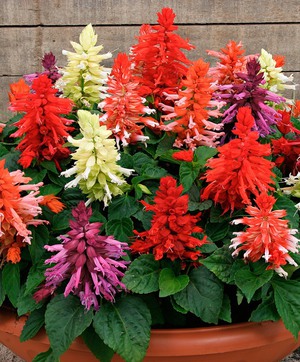 When the seeds begin to hatch, you need to do everything necessary so that the plants do not begin to stretch out into a string and do not die. This usually happens if the sprouts are kept in a shaded place or room where it occurs at night strong temperature rise... In this case, the plants need to be sprinkled with additional soil to protect them from falling.
When the seeds begin to hatch, you need to do everything necessary so that the plants do not begin to stretch out into a string and do not die. This usually happens if the sprouts are kept in a shaded place or room where it occurs at night strong temperature rise... In this case, the plants need to be sprinkled with additional soil to protect them from falling.
You need to be very careful during watering, avoiding the leaf blade getting wet. This period is one of the most important when growing Salvia seedlings from seed. To obtain strong seedlings, it is necessary to carry out additional lighting and maintain a low temperature at the first stage of planting.
Salvia seedlings dive at the moment when the seedlings form at least two true leaves. During the transplant, you must deepen the sprouts to the first cotyledon leaves. For the first time, the plants are transplanted into a common container, placing them no closer than 5 cm from each other. The second time, the seedlings are dived after a month, using individual cups. They must be filled with high-quality soil mixture, it is necessary to transplant seedlings with a sufficient amount of earthen coma, since they will have to grow for at least one and a half months.
To understand whether there is a need for fertilization when growing seedlings is possible only over time. If you can see that the seedlings grow very slowly, then fertilizing with mineral compositions for flowers that need to be applied in small quantities will be useful. However, the main thing that needs to be understood is that every time a transplant is carried out, the plants dive into a container with fertile soil.
The formation of 3-4 pairs of true leaves in seedlings is signal for pinching the top... This operation will help speed up the formation of axillary shoots. At this stage in the seedling life cycle, it must be placed at regular intervals to avoid shading. In late April, you need to lower the night temperature to 10 degrees, which will help to better prepare the salvia for planting in open ground.
Tips for growing seedlings
You can get high-quality Salvia seedlings from seeds if you follow the following recommendations:
- the soil used for growing seedlings must be fertile, and the seeds are of high quality;
- it is imperative to maintain the optimal temperature and lighting conditions, taking into account each specific growth period;
- constantly monitor the state of the earth coma and, if necessary, moisten;
- pinching plants at the moment when it is required for salvia.
Planting salvia seedlings in the ground
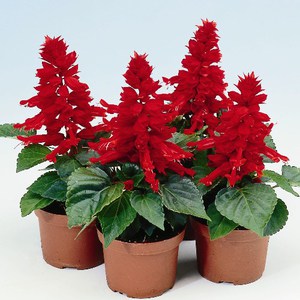 Before transplanting this perennial plant into open ground, you must find a suitable place for a flower bed. The obligatory requirements that the site must meet are the presence of good lighting, light fertile soil with excellent moisture capacity. It is possible to increase the splendor of flowering by introducing instant phosphorus-potassium fertilizers into the soil. Before transferring the seedlings to the holes, a handful of ash, a spoonful of superphosphate and a liter of well-rotted organic matter are added to them.
Before transplanting this perennial plant into open ground, you must find a suitable place for a flower bed. The obligatory requirements that the site must meet are the presence of good lighting, light fertile soil with excellent moisture capacity. It is possible to increase the splendor of flowering by introducing instant phosphorus-potassium fertilizers into the soil. Before transferring the seedlings to the holes, a handful of ash, a spoonful of superphosphate and a liter of well-rotted organic matter are added to them.
Planting is carried out by transshipment, the plants themselves need to deepen a little... After watering, for which warm water is necessarily used, the plants need to create an artificial shade for a couple of days so that they can take root if it is not possible to transplant in cloudy weather.
Conclusion
Salvia is a worthy decoration for any garden. However, in order to grow it, you need to spend a lot of time and effort on growing seedlings. This technique allows you to get strong and hardened plants that easily take root in the open field. But this event can be successful only if all conditions are met. The most important thing is to properly prepare for growing seedlings, since it is this that determines the future quality of plants.
